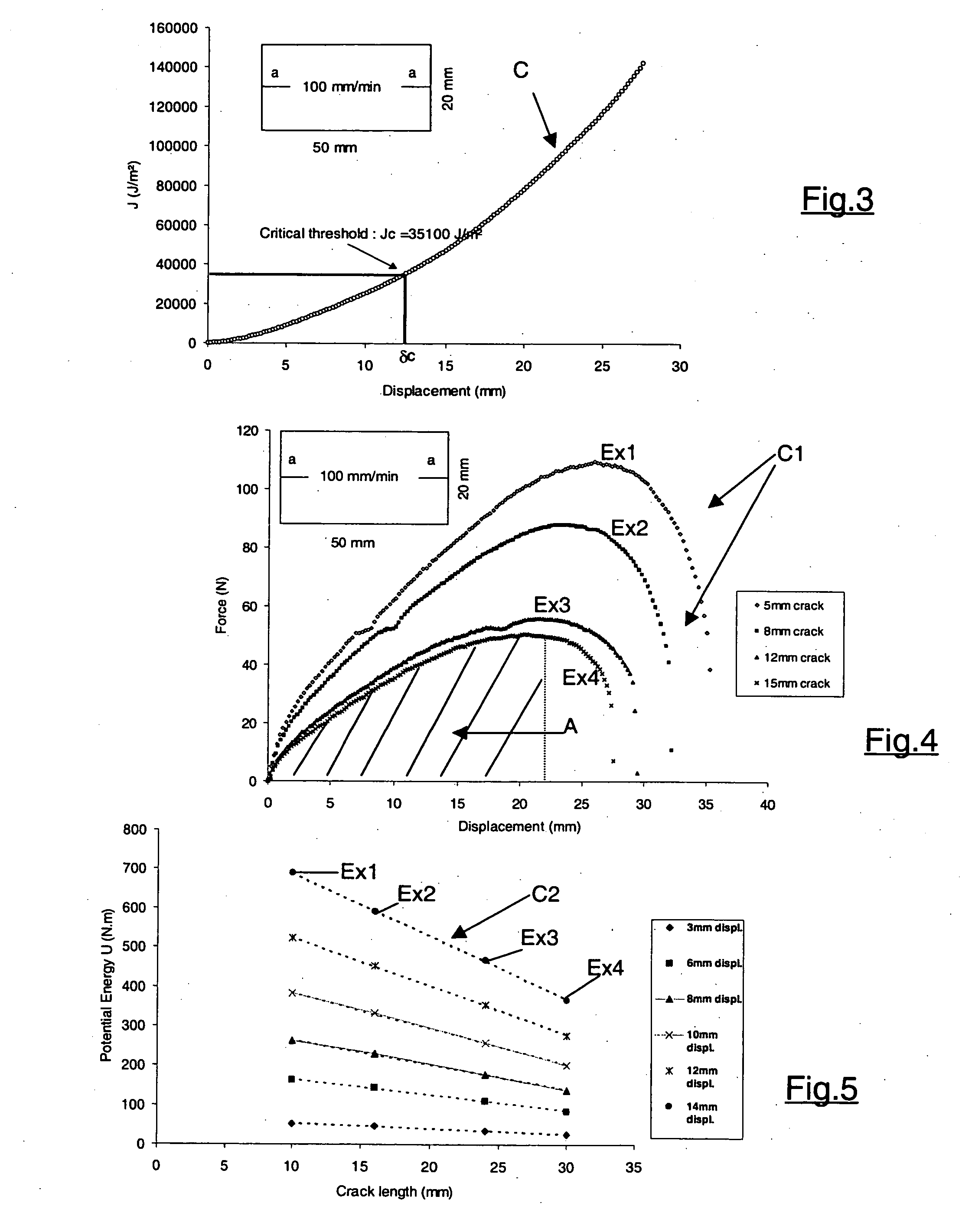Laminated glazing material
a technology of laminated glazing and glass, applied in the direction of laminate, electrical/magnetic measuring arrangement, using electrical/magnetic means, etc., can solve the problems of poor acoustic characteristics of pvb, and inability to meet the mechanical properties of resins with high acoustic performan
- Summary
- Abstract
- Description
- Claims
- Application Information
AI Technical Summary
Benefits of technology
Problems solved by technology
Method used
Image
Examples
Embodiment Construction
[0023]FIG. 1 depicts a laminated glazing material according to the present invention. The laminated glazing material includes two glass sheets 10 and 11, and an intermediate polymer film 12. The glass sheets 10 and 11 have, for example, a thickness of 6 and 4 mm respectively, while the thickness d of the intermediate layer 12 can be variable. The thickness d is chosen based upon the type of material chosen to construct the intermediate layer 12.
[0024] The thickness d that is established for the intermediate layer 12 depends upon the tearing strength of the material used to construct the intermediate layer. The tearing strength is specific to each material, and is characterized by an energy value representative of the energy necessary for propagation of a crack initiated in the material. This energy value, known as critical energy Jc (expressed in J / m2), is different for each type of material and is independent of the film thickness.
[0025] The tearing strength of the material, whic...
PUM
| Property | Measurement | Unit |
|---|---|---|
| thickness | aaaaa | aaaaa |
| length | aaaaa | aaaaa |
| thickness | aaaaa | aaaaa |
Abstract
Description
Claims
Application Information
 Login to View More
Login to View More - R&D
- Intellectual Property
- Life Sciences
- Materials
- Tech Scout
- Unparalleled Data Quality
- Higher Quality Content
- 60% Fewer Hallucinations
Browse by: Latest US Patents, China's latest patents, Technical Efficacy Thesaurus, Application Domain, Technology Topic, Popular Technical Reports.
© 2025 PatSnap. All rights reserved.Legal|Privacy policy|Modern Slavery Act Transparency Statement|Sitemap|About US| Contact US: help@patsnap.com



